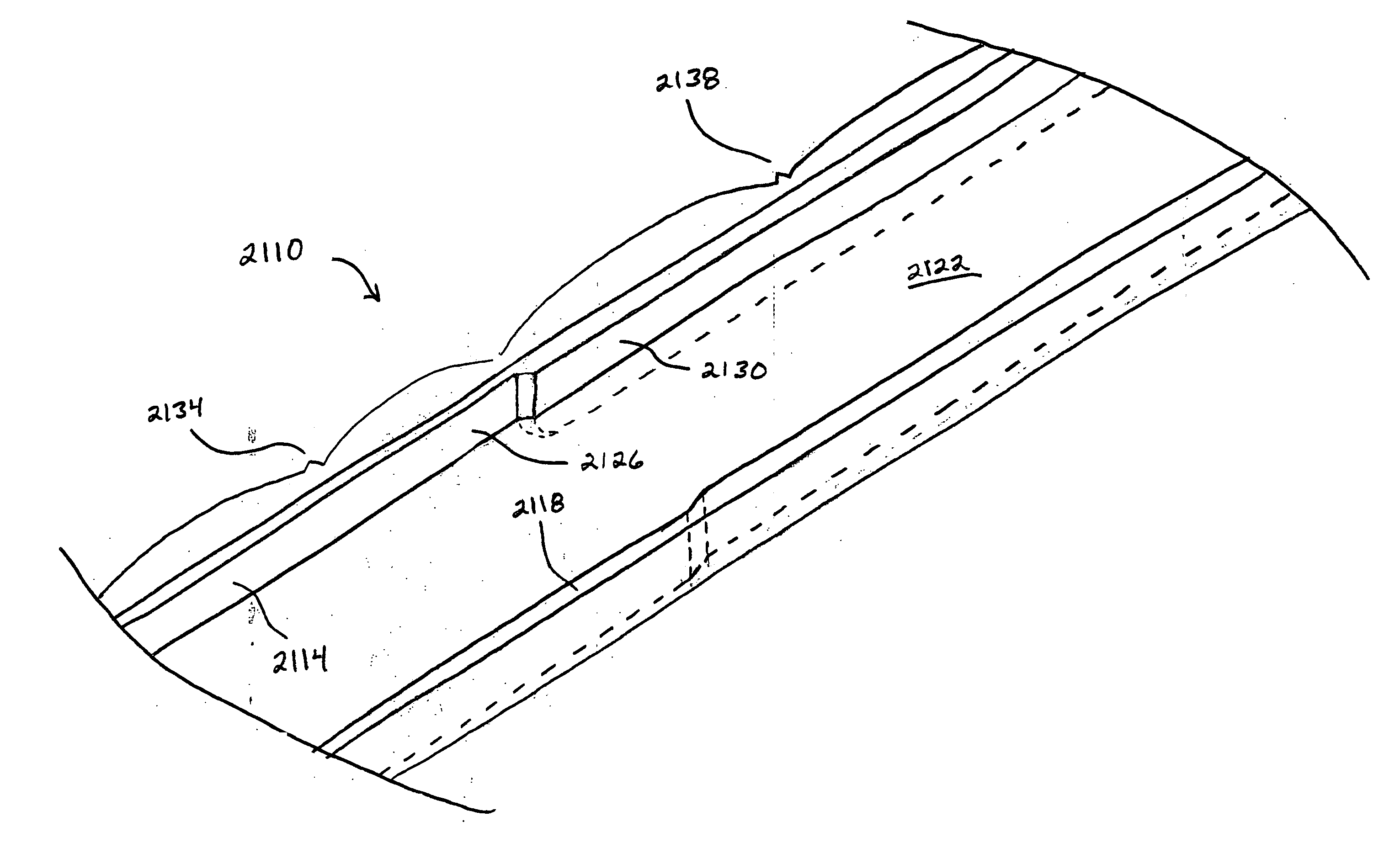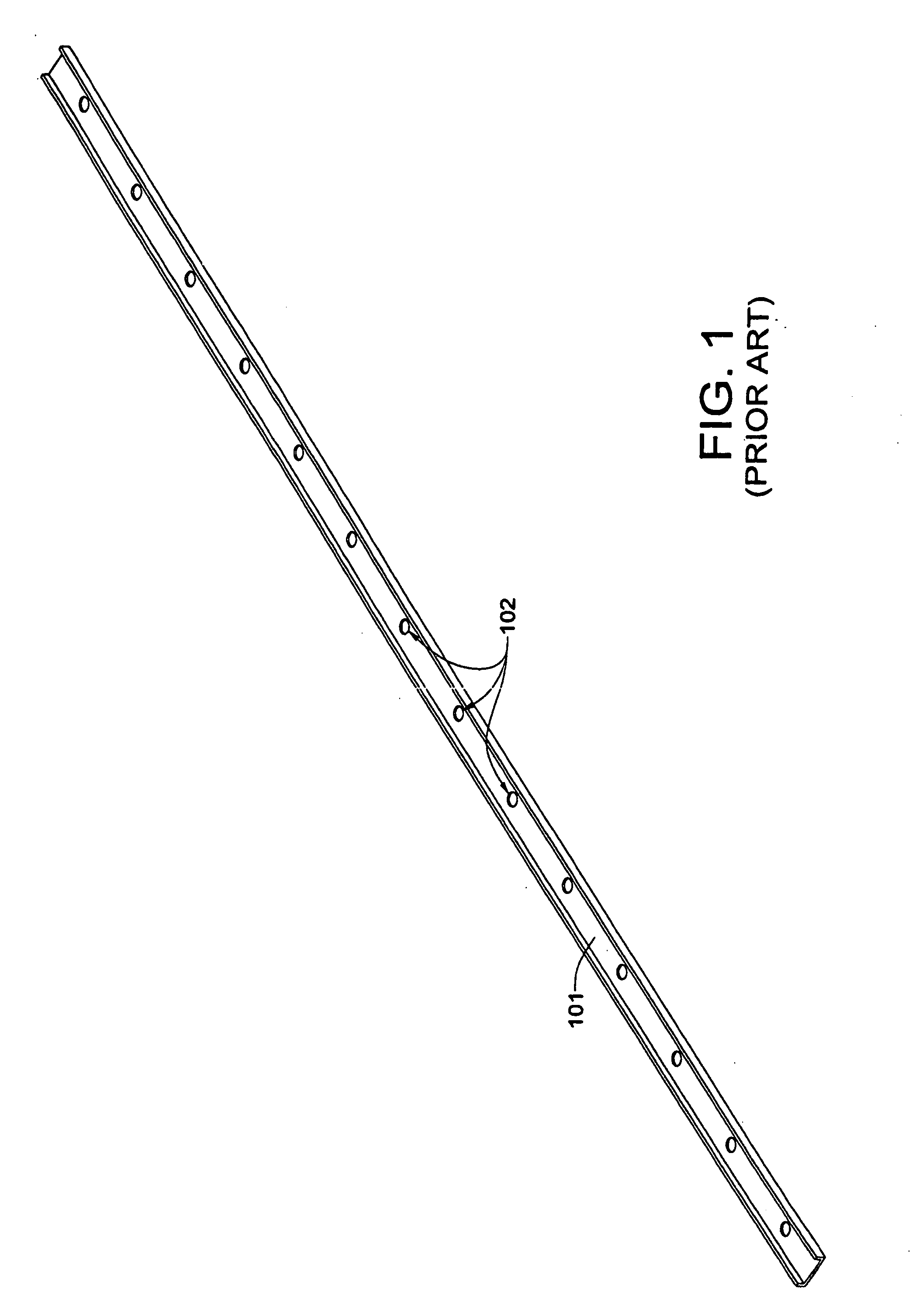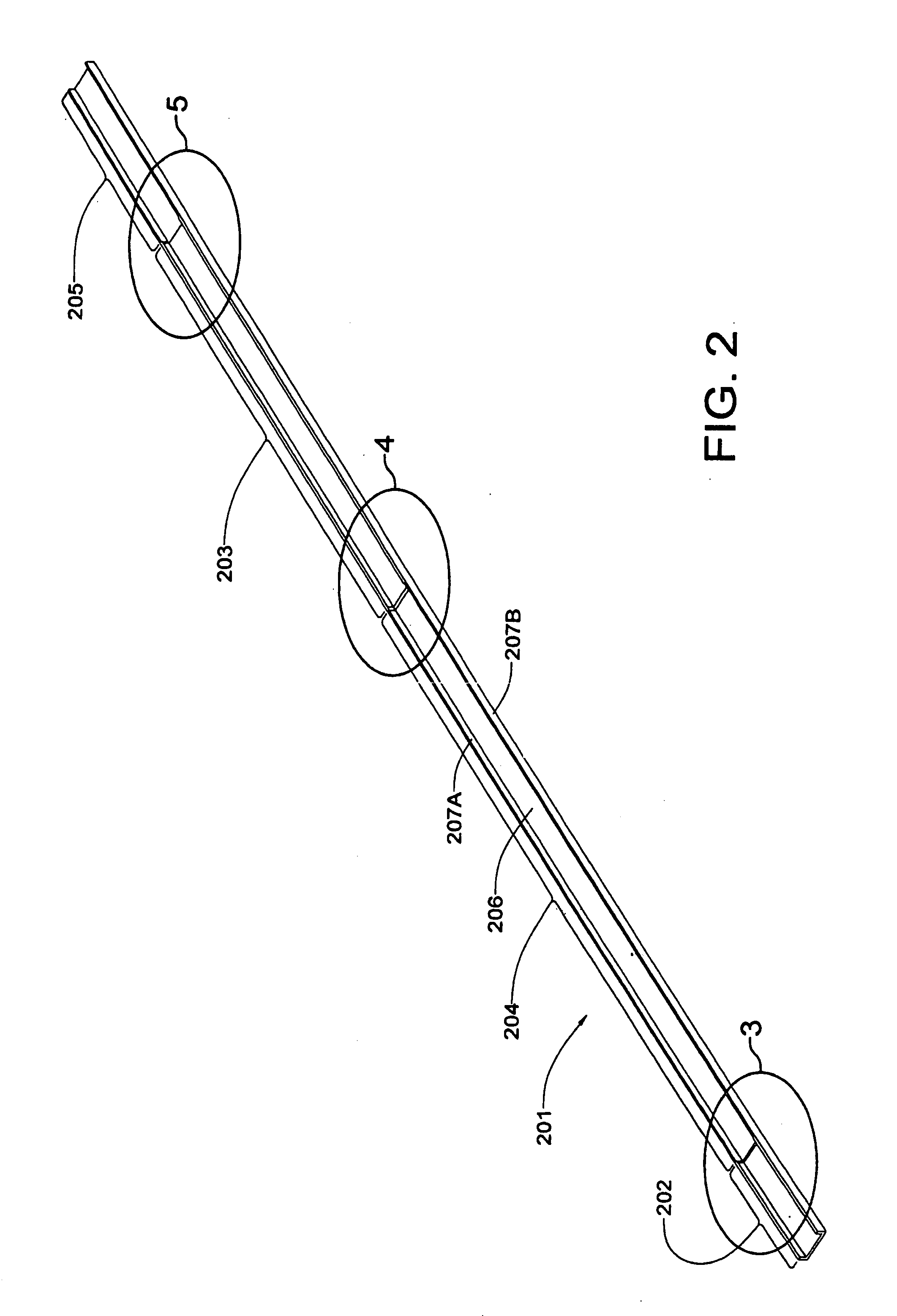Molded composite climbing structures utilizing selective localized reinforcement
a composite and localized reinforcement technology, applied in the field of climbing structures, can solve the problems of structural failure, debilitating deterioration, gradual loosening of steps and braces, and gradual loosening of steps and braces, and achieve the effect of increasing the amount of composite material fibers and less structural stress
- Summary
- Abstract
- Description
- Claims
- Application Information
AI Technical Summary
Benefits of technology
Problems solved by technology
Method used
Image
Examples
first embodiment
[0078] Referring now to FIG. 2, a first embodiment composite ladder rail 201 is shown that may be used in the fabrication of a base section of a non-self-supporting extension ladder such as the one that is the subject of U.S. Pat. No. 5,758,745 (the '745 patent) granted to Robert D. Beggs, et al. This patent is hereby incorporated by reference into the present application. The rail 201 has a flattened C-shaped cross-section, which is of non-uniform area throughout its length. The rail 201 comprises a rail back 206 and rail flanges 207A and 207B extending upward from the rail back 206. The rail 201 has an augmented cross-sectional area at the lower end 202, to which a hingeable foot will be attached in a conventional manner, and at a maximum and near-maximum extension overlap region 203. As the foot of the ladder is subject to impact abuse, it would benefit from being reinforced with additional structural fibers for added strength. The overlap region 203 would also benefit from being...
second embodiment
[0082] Referring now to FIG. 6, a second embodiment composite ladder rail 601 is shown that may be used in the fabrication of a self-supporting combination step and extension ladder such as the one that is the subject of U.S. Pat. No. 4,371,055 (the '055 patent) granted to Larry J. Ashton, et al. This patent is hereby incorporated by reference into the present application. The ladder of the '055 patent includes a pair of base sections, each of which is fabricated from a plurality of rungs interconnecting a pair of channeled outer side rails of molded fiberglass, and a pair of fly sections, each of which is fabricated from a plurality of rungs interconnecting a pair of inner side rails of molded of fiberglass. Each of the inner side rails is telescopically mounted within an outer side rail so that the inner side rails can be extended to increase the height of the ladder in either configuration. The two fly sections are hinged together at the top ends so that the ladder may be folded ...
PUM
| Property | Measurement | Unit |
|---|---|---|
| zero degree angle | aaaaa | aaaaa |
| angle | aaaaa | aaaaa |
| angle | aaaaa | aaaaa |
Abstract
Description
Claims
Application Information
 Login to View More
Login to View More - R&D
- Intellectual Property
- Life Sciences
- Materials
- Tech Scout
- Unparalleled Data Quality
- Higher Quality Content
- 60% Fewer Hallucinations
Browse by: Latest US Patents, China's latest patents, Technical Efficacy Thesaurus, Application Domain, Technology Topic, Popular Technical Reports.
© 2025 PatSnap. All rights reserved.Legal|Privacy policy|Modern Slavery Act Transparency Statement|Sitemap|About US| Contact US: help@patsnap.com



